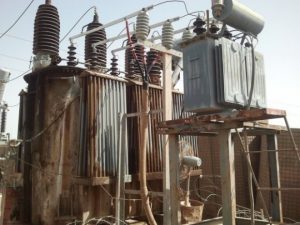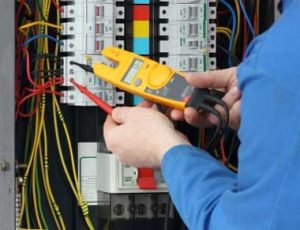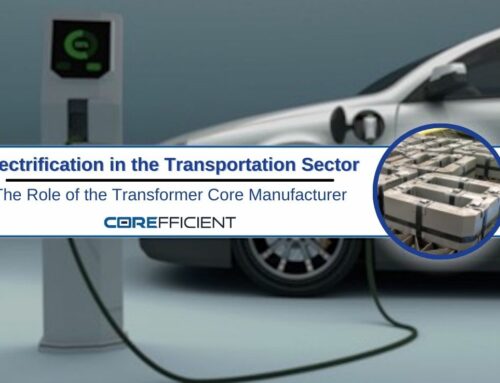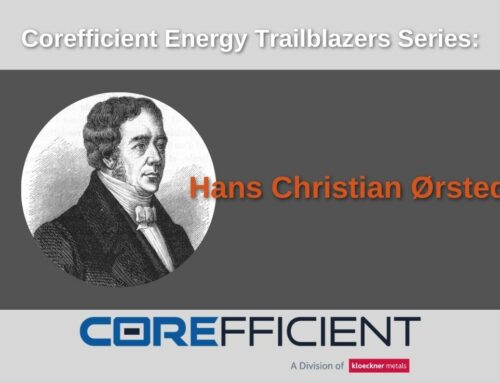Electrical transformers are complex, requiring synergy of multiple systems and regular maintenance to operate at full capacity. Why do transformers sometimes fail? Determining the weak link that caused a failure isn’t always easy. There are several factors that can cause a failure such as: Mechanical or electrical defaults, lightning or even human error. Fortunately, a long history of failure documentation and improved maintenance standards can help to prevent failures or detect them before the damage becomes permanent.
When determining the cause of failure, the age of the transformer is critical information for narrowing down the list of potential issues. If the transformer in question is relatively old (15-20 years), the damage may well be due to normal wear and tear.
A common issue with aging transformers is insulation degradation. As a transformer heats up, the high temperatures can gradually weaken the insulation system. The weakening of the system will happen faster if the transformer is frequently overloaded. The net result of small, incremental increases in loading capacity over time is a weakened insulation system. Overloading causes overheating, and eventually thermal degradation that acts thrrough cracks in the insulation. Regular maintenance and diagnostic tests will help to detect this issue early. When thermal degradation has occurred, it will typically show as discoloration of cellulose.
As faults in the insulation develop, further problems accrue, such as moisture absorption in the transformer oil. Dissolved gas analysis should be performed frequently to detect whether the oil is contaminated with gas or moisture. The type and amount of contaminant can help to determine what type of fault has occurred.
Other common issues with oil and moisture involve leaking in the transformer tank. If the necessary oil level is not maintained, the windings will begin to overheat, eventually leading to transformer failure. Preventative maintenance of this issue should involve regular oil filtration.
Aging transformers may display signs of electrical or mechanical failure. Mechanical failures involve physical displacement or damage of parts, and happen for a number of reasons, including but not limited to seismic activity and through faults. Preventative and early onset maintenance of mechanical failure typically involve frequent Sweet Frequency Response Testing and induced voltage testing. Partial discharge present during voltage testing often indicates some sort of mechanical failure.
Electrical failure typically involves line surges, which is a very common cause of transformer failure. Voltage spikes, switching surges and line faults are a few common culprits of electrical failure. The primary method of preventing this is high quality surge protection and regular maintenance of the existing surge protection system. The regular checks and balances of surge protection should involve annually checking the ground connection of the surge arrester. Connection should be tight.
Preventative maintenance of this issue should include making sure the electrical load settings are appropriate for the specific type of transformer being used. Also, both mechanical and electrical damage may be prevented or detected early through use of the built-in devices that most transformers come with. These include the Buchholz and pressure rise relays and pressure relief device for mechanical purposes, and the differential, overcurrent and ground current relays for electrical.
Lightning surges are very capable of destroying the function of a transformer but are not as common as some of the problems listed above.
If a relatively young transformer fails and the problem isn’t immediately clear, a lightning surge should be considered as a real possibility. Among this type of external and uncontrollable source of damage are foreign objects or animals in the transformer and malicious intent.
Of course, an additional method of ensuring a long life for your transformer is choosing the best manufacturers. Corefficient is set on delivering only the highest quality transformer cores, confirmed through multiple rounds of testing during the manufacturing process.
Take the first step toward a high quality, long-lasting transformer by contacting Corefficient today: (81) 2088-4000, or toll free USA at 1 (844) 202-1226.
Sources:
https://www.hsb.com/TheLocomotive/AnAnalysisOfTransformersPart2.aspx
http://electrical-engineering-portal.com/transformer-failures-maintenance








